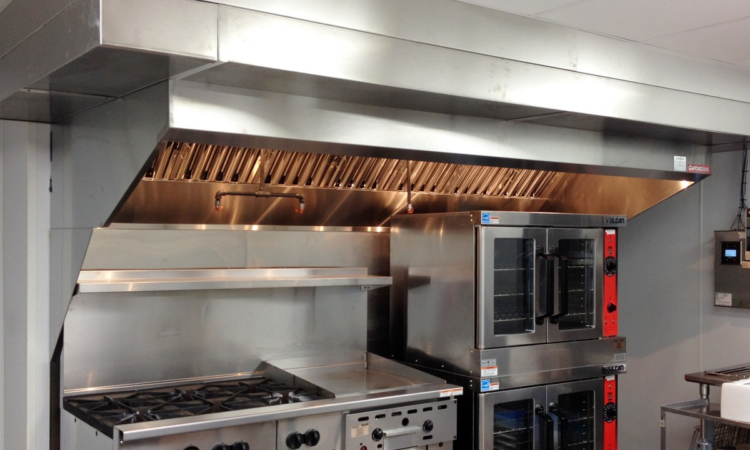
You would think that commercial kitchen hoods would be a fairly simple thing to design and install. However, once the decision to install one is made, many installation complications occur due to code requirements. The first step in any kitchen hood application is to understand what type of hood is required. The hood type needed is based on the usage. Thus, kitchen hood specifications depend on the type of cooking equipment that will be installed under the hood.
Commercial kitchen exhaust hoods serve very different purposes. For example, one that removes moist warm air from a dishwasher or steamtable does not need to be capable of removing grease from the exhausted air. A hood over a kitchen grill or deep fat fryer does need to have grease removing capabilities. Thus, the first rating that needs to be established for hood selection is the 2015 International Mechanical Code (IMC) “duty type”.
IMC Ratings and Requirements
The International Mechanical Code (IMC) provides comprehensive guidance on kitchen hood ratings based on temperature operating ranges and the types of cooking equipment in use. These ratings categorize hoods into Light, Medium, Heavy, and Extra Heavy Duty classifications, each with its own temperature range and associated cooking equipment. For instance, Light-duty hoods are suitable for appliances such as gas and electric ovens, while Extra Heavy Duty hoods are required for high-temperature cooking equipment like chain broilers and infrared broilers. Adhering to these IMC standards is critical for ensuring optimal performance and compliance with regulatory requirements.
Design Styles and CFM Requirements
Commercial kitchen exhaust hoods are available in various design styles, each tailored to specific applications and airflow requirements. Common design styles include Eyebrow, Wall Mounted Canopy, and Single Island Canopy, each with its own unique characteristics and airflow considerations. Understanding the cubic feet per minute (CFM) requirements associated with each design style is crucial for selecting the appropriate hood configuration to adequately capture and remove airborne contaminants. Proper airflow management is essential for maintaining a clean and safe kitchen environment.
Makeup Air Considerations
In addition to exhaust systems, the proper ventilation of commercial kitchens requires careful consideration of makeup air. Makeup air is essential for replacing the conditioned air that is exhausted through the hood during the cooking process. Depending on the kitchen’s specific requirements, makeup air can be supplied through a combination of treated and untreated air sources. Balancing airflow between exhaust and makeup air systems is crucial for ensuring optimal ventilation performance and energy efficiency while maintaining a comfortable indoor environment for kitchen staff and patrons.
Installation and Compliance
The installation of commercial kitchen exhaust hoods involves meticulous attention to detail to ensure compliance with regulatory standards and safety requirements. This includes using appropriate construction materials, implementing safety controls, and integrating fire suppression systems as needed. Collaboration with fire suppression system subcontractors may be necessary to ensure seamless integration and compliance with regulatory standards. By adhering to these installation practices and regulatory requirements, commercial kitchen operators can maintain a safe and efficient working environment while mitigating potential fire hazards and ensuring compliance with relevant codes and standards.
Conclusion
Navigating the complexities of commercial kitchen exhaust hoods requires a thorough understanding of various factors, including hood types, IMC ratings, design styles, makeup air considerations, and compliance requirements. Selecting the appropriate hood type based on the specific cooking equipment and operational needs is paramount to ensure effective ventilation and compliance with regulations. Furthermore, adherence to IMC standards, including temperature ranges and CFM requirements, is essential for proper hood selection and installation. Balancing airflow between exhaust and makeup air systems is crucial for maintaining a safe and comfortable kitchen environment while optimizing energy efficiency. Collaboration with fire suppression system subcontractors and meticulous attention to detail during installation are vital to ensure compliance with code requirements and the safety of commercial kitchen operations. By understanding and addressing these considerations, stakeholders can ensure the successful implementation of commercial kitchen exhaust hoods that meet regulatory standards and contribute to a safe and efficient workspace.
